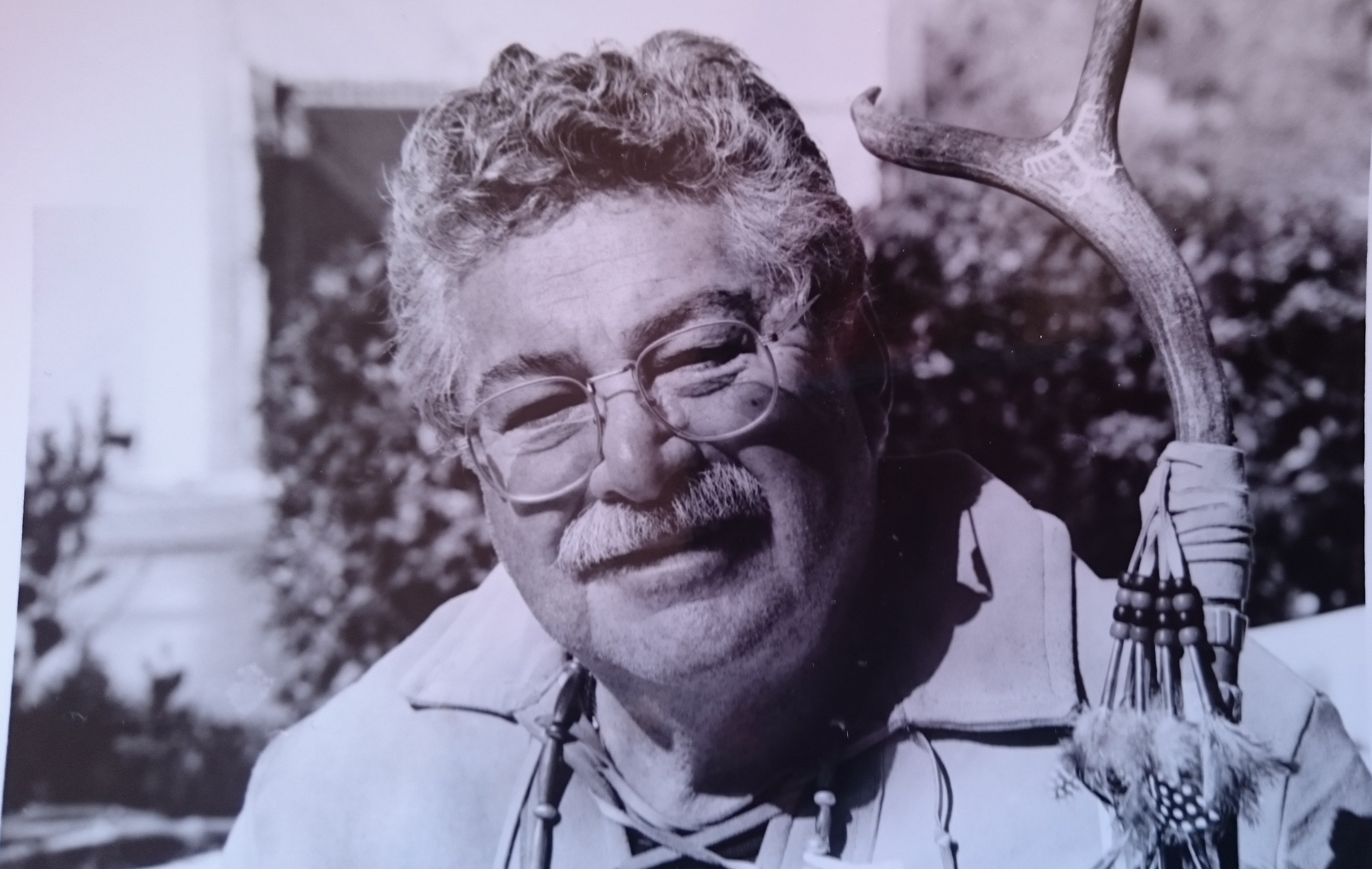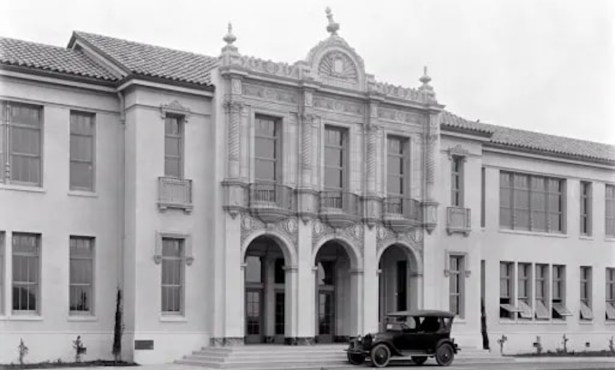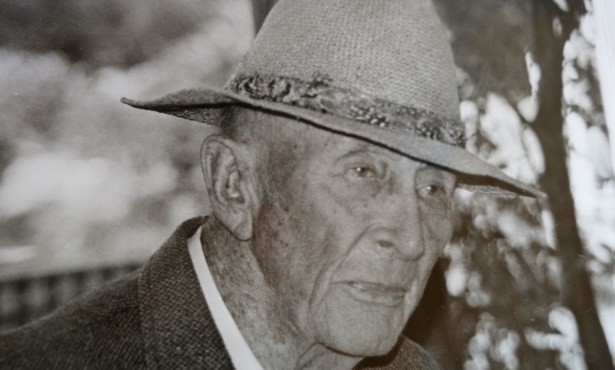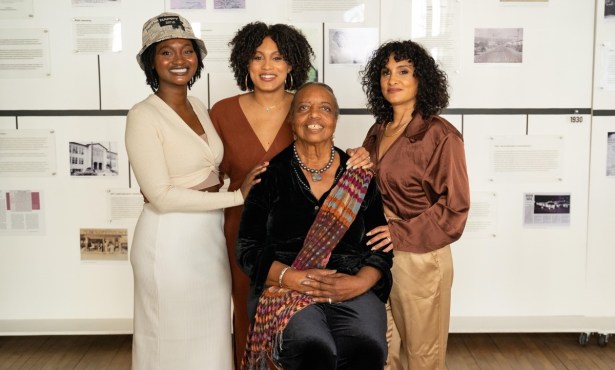It Makes a Circle
Interview with Cresensio Lopez, Descendant of the Chumash People

Cresensio Lopez was born on April 15, 1930, and grew up in Santa Barbara, where his roots were firmly planted. Because his parents spoke Spanish and English, while growing up, he assumed that he was of Mexican ancestry, but later in life he learned that he was descended from the Chumash people. He visited my students in 1998 at Vista de las Cruces in Gaviota as part of an oral history project, and he spoke about how much his Chumash heritage had come to mean to him.
“I have grandchildren now,” he told us. “It is very important to me to let them know as children who they really are. I think it’s important for all of us to know about our parents, about our grandparents, and to keep that in your heart. A lot of kids nowadays only think about tomorrow — they don’t think about yesterday. But yesterday is a part of who you are.”
One of Cresensio’s great-great-grandmothers was a lady named Scolastica, who was born in a village on the end of State Street, where the wharf now is. His childhood home was on Carrillo Street, not very far from this location. My students were curious about what life was like for him as a boy.
“I liked hiking,” he told us, “and I mean we’d really go hiking. We used to ride our bikes to Rocky Nook, back of the Old Mission by the creek. We’d stash our bikes and follow the creek all the way to La Cumbre Peak. We’d take a backpack and a couple of canteens of water, and we would stop on the way along Tunnel Road where there were orange orchards. We’d steal some oranges there, and from one of the kids, whose family had the Vior Bakery, we’d get two or three loaves of French bread and a cube of butter, and we’d be gone all day — we’d come back maybe about sunset.
“But my favorite place was the empty lot across the street from my house. A block away, on the west side of the street, was the Japanese community, and on the other side was the Chinese community, and the rest of the neighborhood was made up of Italians, Mexicans, Spaniards, and Indians. We had all kinds of kids and we all played together.”
Cresensio was a memorable presence in our classroom. He had thick white hair and kind eyes that twinkled behind his spectacles, and he carried a magnificent walking stick adorned with an antler and feathers, inlaid with bits of turquoise and abalone. He shared his stories and wisdom and gave each of the kids a handmade necklace of beads, which struck me as extravagant and generous, but this is what Cresensio was all about — sharing, giving, and asking for nothing in return. “What you do makes a circle and comes back,” he said, and he viewed this philosophy as part of his Chumash heritage.
Cresensio went to Lincoln School until 3rd grade, then transferred to Catholic school. After the death of his father when Cresensio was only 10 years old, he had to work hard to pick up the slack, but he spoke gratefully about his education, and in particular, about his fondness for a kind nun named Sister Mary Dennis. He served in the U.S. Navy, worked in a meat processing plant, and started a little flower shop business. At one point, he owned a small apartment building that he rented to retired school teachers; he looked after one resident tenderly until her death at 96. He had a special affinity for elderly people, who too often seemed lonely and forgotten.
In fact, he described himself as a healer, and his gentle demeanor seemed to validate this. “Now there’s all kinds of healings,” he explained. “Sometimes just putting your arm around somebody when they’ve fallen down and hurt themselves, or when somebody has died, just putting your arm around them and reassuring them that they’re gonna be okay — that’s a form of healing.”
As the years went by, Cresensio looked ever more deeply into his Chumash roots and devoted a lot of his time after retirement to helping to preserve and teach about the Chumash culture. He was on the Board of Directors of the Maritime Museum and was very proud of his role in an exhibit about the Chumash, who were excellent mariners. He was part of a team that built two tomols and filmed a documentary to record the process.
“Oh, it’s a beautiful canoe!” he told us. “We built it in the backyard, and it’s about 26 feet long and takes five rowers. I did all the abalone inlay on it. It’s called the Swordfish, and it’s meant to be used. It will eventually be on display in Goleta, but we have the right to take it out and use it. We have a crew of about eight young men who have been taught to take it out and maintain it.”
Cresensio also crafted walking sticks, necklaces, and rawhide mandalas as interpretive artistic expressions of his Chumash heritage. He never sold these objects; he found joy in giving each one away to the person for whom it seemed right.
“Many good things have happened here,” he told us as we said our goodbyes. “It’s a funny thing — whenever I have company, I always just automatically get in the car and we drive up through this Gaviota area. I am drawn to it. Just going through this country, you somehow know that it’s a very spiritual place. I can feel that this is part of where I belong.”
Without fully realizing it, Cresensio had started out in exile from his native culture, but he rediscovered his ancestry, found the best of both worlds, and healed his own wounds by healing others. I saw him once or twice after this visit, but he passed away a few years later. I searched online for him many times to learn more about him, but our interview is the only thing that comes up, along with an image of an abalone swordfish inlay he made for the bow of the tomol. A beautiful walking stick he gave me still stands by the doorway of my house, so I think of him every day.



